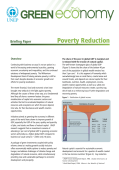This paper proposes an analytical framework for assessing policies that will contribute to a better integration of environmental externalities in the pursuit of economic efficiency and growth objectives. The framework consists of two parts. The first part lays out principles and criteria for the identification and selection of policies that will benefit both income and the environment or that will boost income at the least cost in terms of the environment (and vice-versa). In general putting a price on a pollution source or on the over-exploitation of a scarce resource is found to be the most efficient single policy to address many environment externalities. However, given that environmental damage often result from several interacting market failures, an appropriate policy response will in many cases involve a mix of complementary instruments. The second part focuses more on issues of structural adjustment related to the transition towards a greener economy.
With fiscal policy generally constrained by the need to restore confidence in the sustainability of public debt and the effectiveness of monetary policy to stimulate growth is reaching its limits, the question arises: what can advanced economy policymakers do to restore economic growth and stimulate investment? A powerful instrument to restore growth is clear and credible policy to encourage investment in welfare-enhancing activities that need public support to be commercially viable. The low-carbon and wider ‘green’ sector is an exemplar for this.
Key findings are:
Korea, which has had the highest growth rate of greenhouse gas emissions in the OECD area since 1990, adopted an ambitious Green Growth Strategy in 2009. It aims at reducing emissions by 30% by 2020 relative to a "business as usual" scenario, implying a 4% cut from the 2005 level. The Strategy also includes a Five-Year Plan with public spending of 2% of GDP per year to promote green growth. Korea is planning to establish a carbon price through a cap-and-trade emissions trading scheme. Such an approach, combined with a carbon tax in sectors not covered by the scheme, is necessary to reduce emissions in a cost-effective manner and foster innovation in green technology. In addition, each sector should face the same electricity price based on production costs to promote efficient energy use. Given market failures, the government has a role to play in green R&D, particularly for basic research, in fostering green finance and in developing renewable energy resources.

Extreme poverty persists in large parts of the world despite decades of economic growth and efforts for poverty eradication. The recent financial, food and economic crises have brought new setbacks in the fight against poverty. Initiatives aimed at greening the economy in different parts of the world have been shown to improve the quality of life, stocks and flows of natural capital, and GDP, especially the GDP of the poor.
The focus of this chapter is to determine the manner in which Aid for Trade projects and programmes can assist countries in southern and eastern Africa to mitigate and adapt to the impact of climate change in moving to a green economy by focusing on green growth and sustainable development. First, a brief overview of Africa’s climate change vulnerabilities on the regional and sectoral level is provided to establish the urgent necessity for a transition to a green economy. Due to their critical importance for economic growth, development and trade in Africa, the sectors focused on are agriculture, fisheries and aquaculture, and tourism. Second, the chapter focuses on the important contribution of a green economy in generating economic and environmental benefits for African economies. Third, the concept and categories of Aid for Trade are outlined, and the flow of Aid for Trade commitments and disbursements to African countries is analysed.
